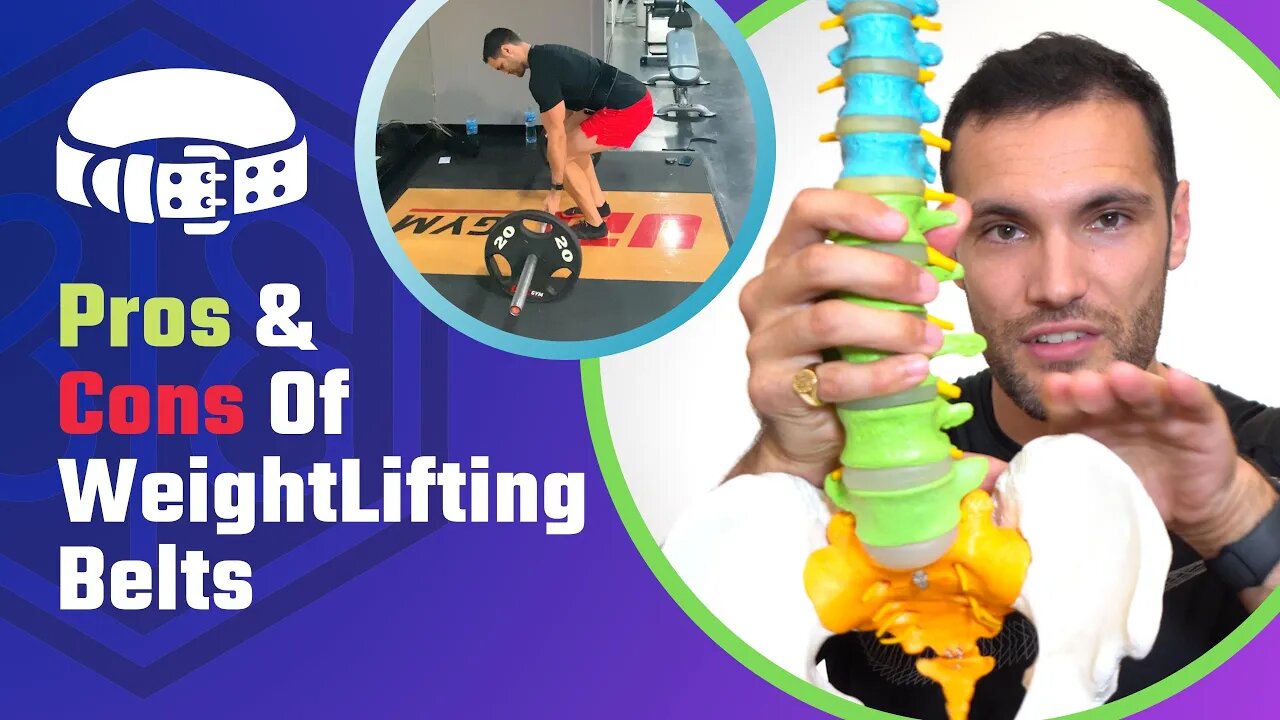Premium Only Content

Should You Train With A Weightlifting Belt For Your Back Pain
Should You Train With A Weightlifting Belt For Your Back Pain
Using a weightlifting belt to help protect your lower back if you're recovering from a lower back injury sounds like a good idea but is it really? It is common, following a lower back injury such as a disc bulge, for people to want to rebuild the lower back so the pain does not come back. This kind of proactive approach is commendable, however all too often people end up looking to tools like weightlifting belts to "protect" their lower back.
So why are weightlifting belts so bad for your lower back?
Firstly, for the purposes of accuracy we're making the assumption that if you're reading this, you are not a competitive powerlifter. We assume that you, like so many, are working out in the gym to be healthy, look good and be more resilient to injury for your long term health and wellbeing.
When it comes to working out and using a weightlifting belt, we have to first understand where specifically the belt is sitting on the human skeleton. Typically it will be fixated around the L2 to L4 vertebral segments. The main reason it is not in line with the L4 to S1 segments is because those segments are set in line with, and beneath, the iliac crests. This means practically speaking we cannot get the belt to this lower lumbar level.
When we consider that most with injuries in the lower back will have injuries at the level of the L4 to S1 segment, maybe it's a disc bulge or herniation, for example, we start to realise that the tool is not doing the job intended.
But it doesn't quite stop there...
The compounding issue is that all of a sudden we have an artificial fixation through the middle of your lumbar spine, the middle of your lumbar spine. So if during the exercise, any area is going to give way, it is going to most likely occur at the levels just above and just below where the belt ends. One of these locations is likely the exact spot you're trying to protect.
Instead of protection, we now focus movement that should have been nicely distributed through a number of lumbar segments, through one segment - an injured segment at that!
Now, if you're wanting to get back into training, that is awesome! When doing so, only do exercises that you feel competent to do! When it comes to sprained ankles, knees and other joints, we could make an argument for supports because they can directly "protect" the target joint, but not the lower lumbar spine.
Try your best going forwards to focus on doing what you can do, and focusing on going through the right kind of rehabilitation for your lower back. This will yield much more well rounded results. Results that last much longer!
⭐ START YOUR FREE 7-DAY TRIAL HERE:
https://backinshapeprogram.com/join-free/
0:00 Weightlifting Belt For Lower Back Pain?
1:18 Spinal Injuries
5:00 Why We Don’t Recommend Using Belts For LBP
#BackInShape #BackPain #WeightLiftingBelt
-
 LIVE
LIVE
Laura Loomer
50 minutes agoEP100: MAGA Goes Scorched Earth On USAID
1,282 watching -
 LIVE
LIVE
SpartakusLIVE
2 hours agoShadow BANNED, but we PARTY ON || Friday Night HYPE
401 watching -
 LIVE
LIVE
Omar Elattar
1 hour agoGRANT CARDONE: “Will I Run for Governor?” | Trump EXPOSED | Bitcoin | $500 Billion Crisis!
347 watching -
 46:48
46:48
Glenn Greenwald
4 hours agoGlenn Takes Your Questions On Gaza, USAID, and More | SYSTEM UPDATE #403
33.3K21 -
 56:42
56:42
Candace Show Podcast
7 hours agoBecoming Brigitte: One Coincidence Too Many | Ep 3
100K131 -
 3:14:38
3:14:38
Nerdrotic
8 hours ago $11.06 earnedDisney Plus's Complete FAILURE! Fantastic Four Trailer, MCU Phase 5 Reveal | Friday Night Tights 340
103K24 -
 1:00:58
1:00:58
The StoneZONE with Roger Stone
3 hours agoWill RINOs Sink Robert F. Kennedy Jr.'s Confirmation? | The StoneZONE w/ Roger Stone
7.79K2 -
 1:15:19
1:15:19
Edge of Wonder
5 hours agoReal Biochip Implants & Havana Syndrome Exposed: Interview With Jesse Beltran
8.97K2 -
 1:00:12
1:00:12
Sarah Westall
4 hours ago10 Billion Trump Lawsuit against CBS 60 Minutes, Ukraine Bio-labs and more w/ John Mark Dougan
19.5K5 -
 57:07
57:07
LFA TV
1 day agoThe ‘Dictator’ Who Downsizes Government | TRUMPET DAILY 2.7.25 7pm
22.7K5